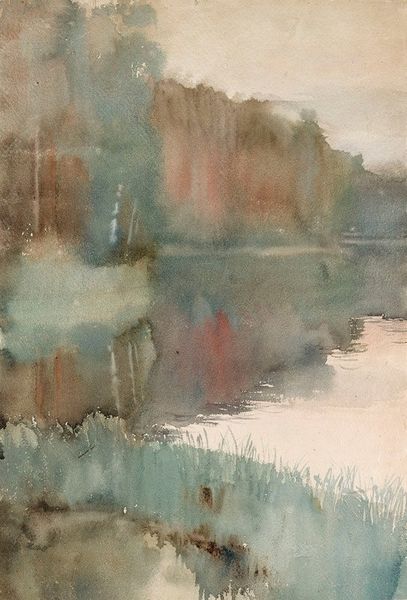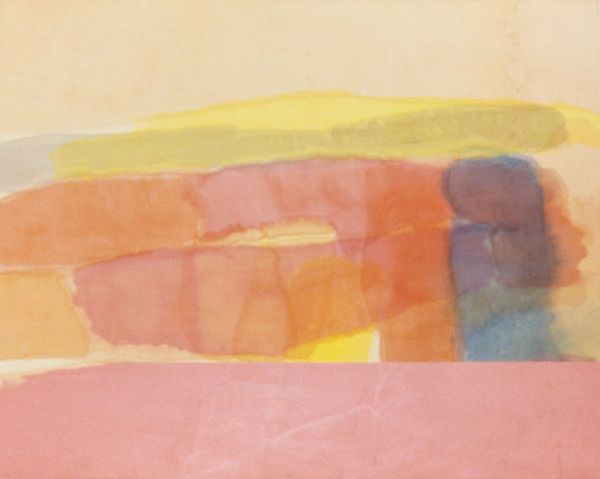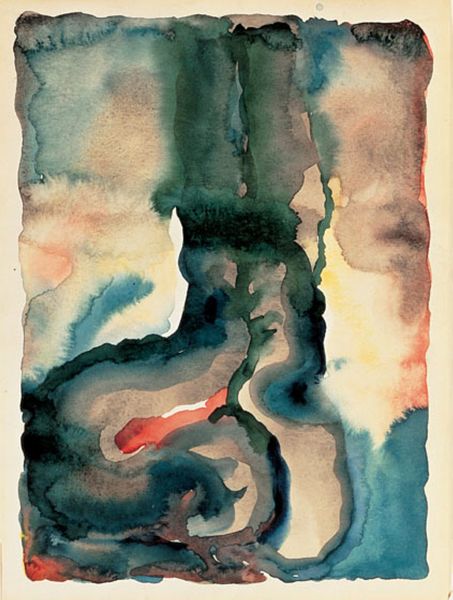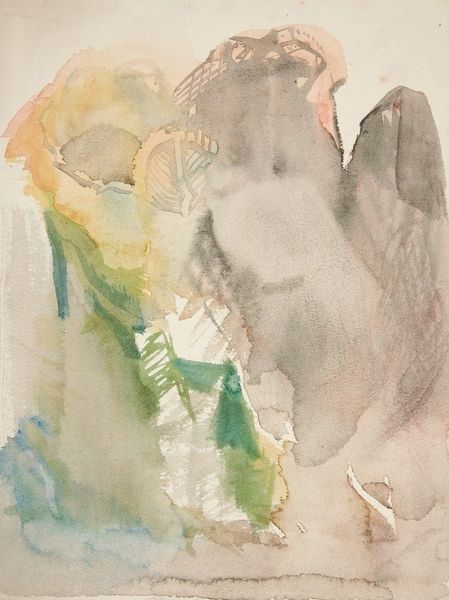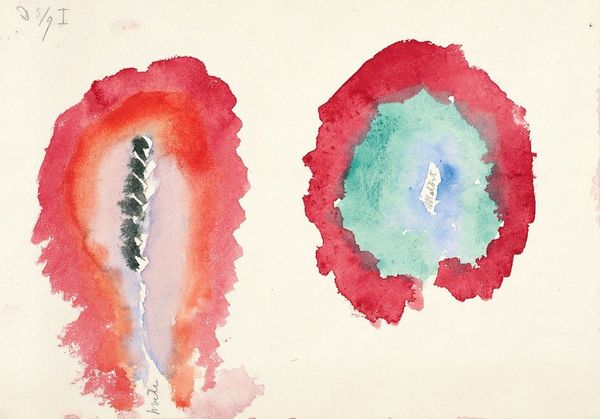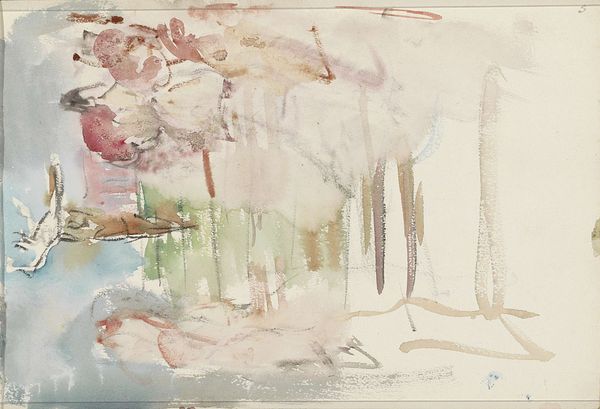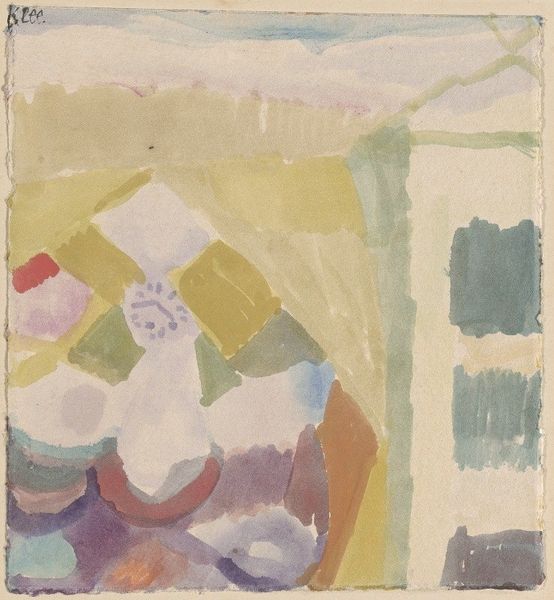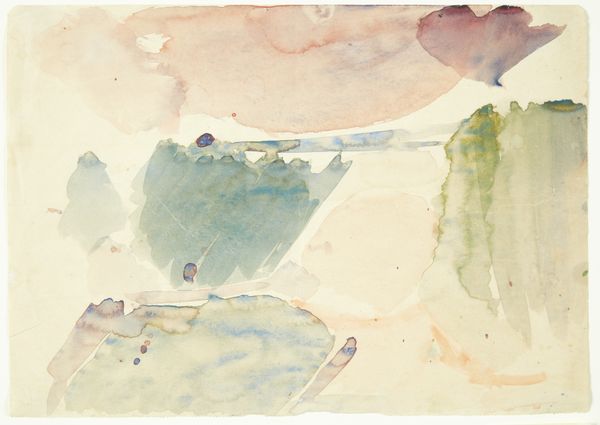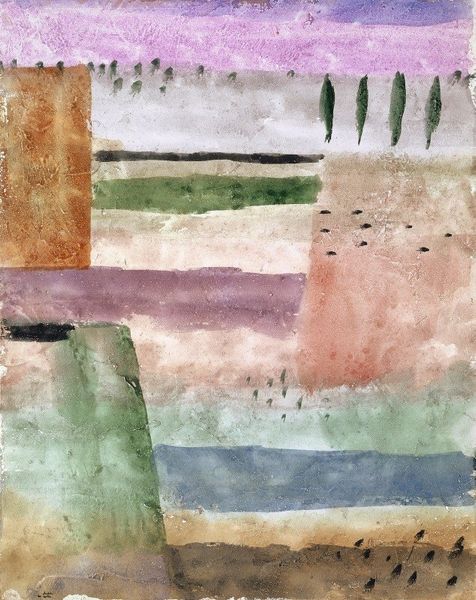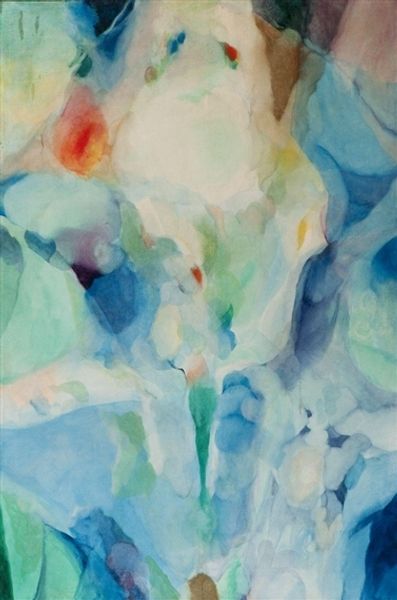
Copyright: Public Domain: Artvee
Curator: This is Edvard Munch's "Kvinner på stranden, Åsgårdstrand," or "Women on the Beach, Åsgårdstrand," created around 1920 using watercolor. Editor: It's incredibly delicate. The colors are so muted and atmospheric. It feels less like a representation and more like a fading memory. Curator: Absolutely. You see Munch returning to the same location, Åsgårdstrand, throughout his career. The women on the beach are recurring symbols; perhaps maternal figures, or stand-ins for aspects of his lost loves? These pale figures appear often in the context of a fragmented landscape, suggesting fragility and also a search for a rootedness in both his personal history, as well as cultural memory and the ancient history of humankind. Editor: I’m drawn to how this watercolor allows for a sense of incompleteness. The white of the paper shines through, acting as a negative space and light, a physical embodiment of emptiness. Watercolor itself dries almost immediately. Given his mental health concerns at that period, perhaps he utilized its fast process as an antidote to fixity and depression. Curator: That reading is astute; this impressionistic approach contrasts significantly with some of his more emotionally charged oil paintings. Yet, even in its seeming calm, the reflection of the figure warps the subject, doubling and fracturing the women. The painting could then speak of the fractured idea of femininity. Editor: Note the quality of the paper; it's thin and absorbent, which adds to that delicate quality we mentioned before. This is not a work trying to build a grand illusion, is it? This medium offers transparency in its production and handling. You cannot separate the watery marks from the substance of the thing it is trying to display, Munch invites his viewers to feel the texture and to almost retrace the painting’s movements. Curator: A fascinating perspective; a close reading of its materiality reveals intention, rather than accident. For me, "Women on the Beach" seems like a distillation of recurring themes. I wonder what this shoreline represented for him and if it held any peace? Editor: Ultimately, it invites you to touch that surface with the mind. We have discussed materials and memory. I like this work very much indeed.
Comments
No comments
Be the first to comment and join the conversation on the ultimate creative platform.
